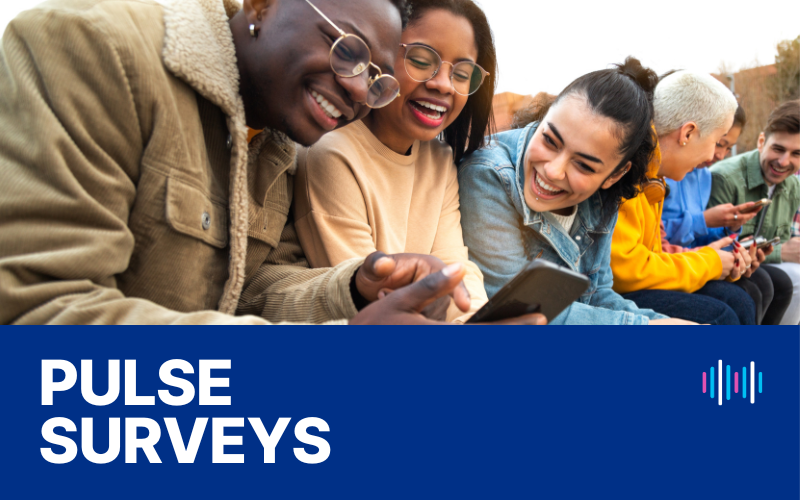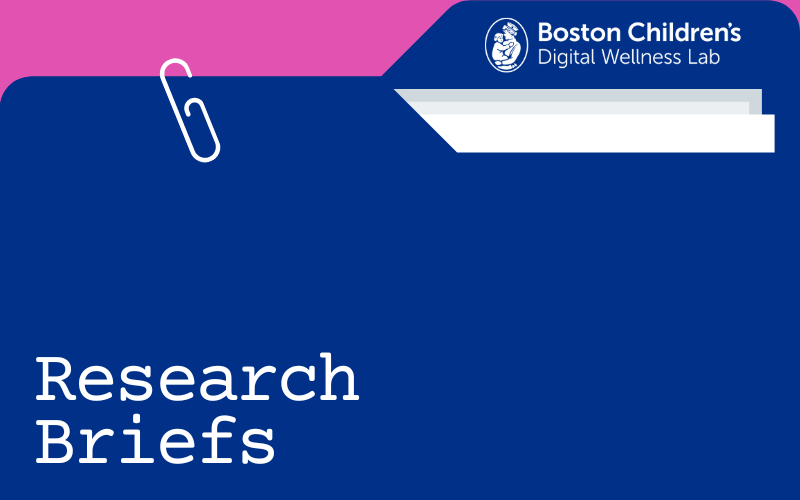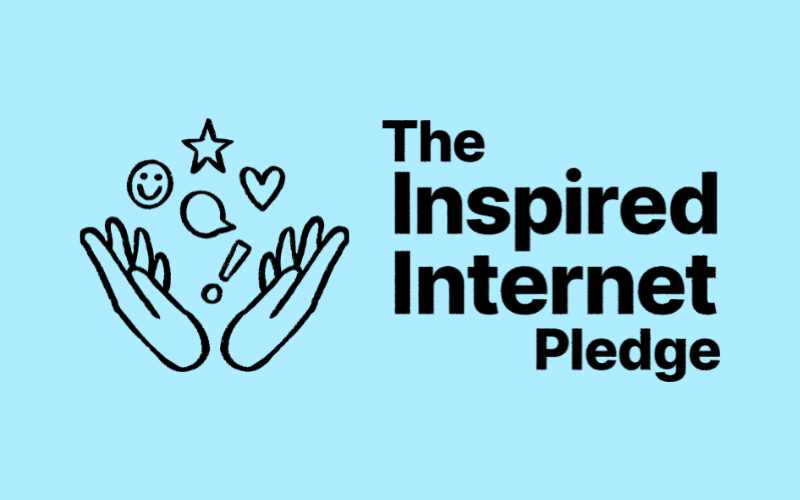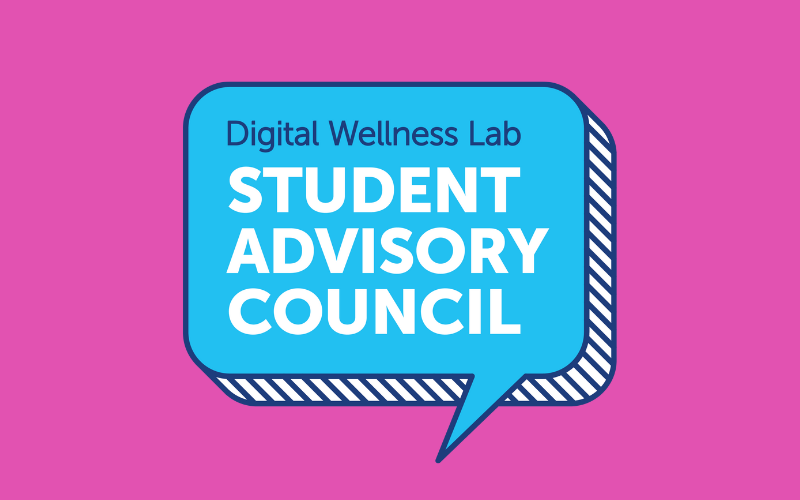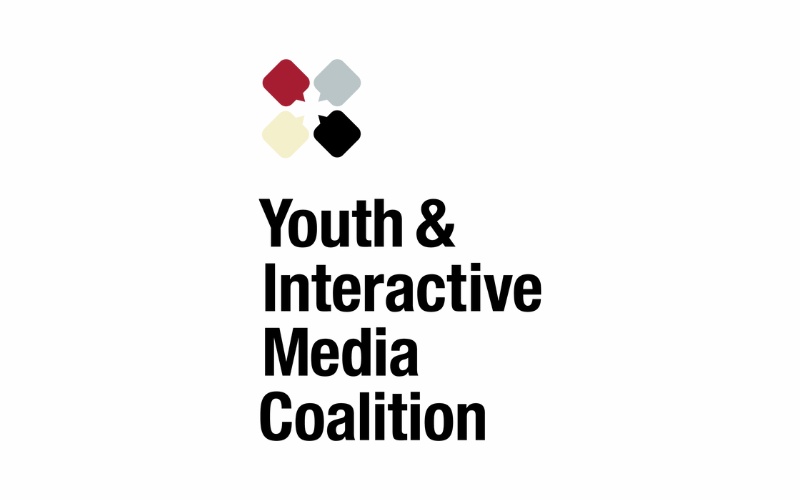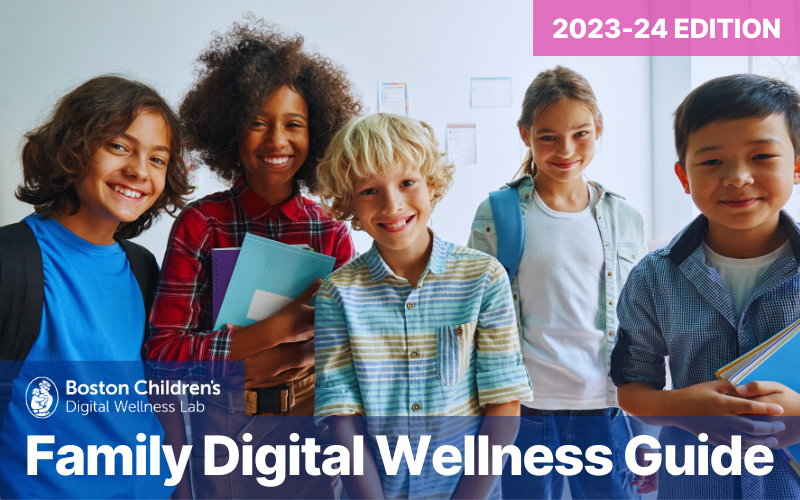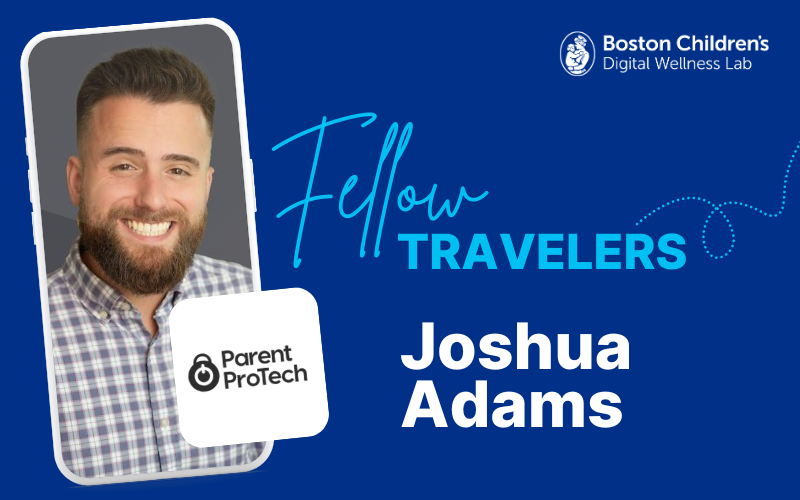Josh Adams
Creative Director, Parent ProTech
What’s your organization’s mission?
Our heart at Parent ProTech is to help students build a healthy relationship with technology. We talk about the good, the bad and the ugly of tech. And really, at the end of the day, we want to come alongside parents, teachers, educators, community leaders, and also students to help with this. We have a few primary, different focus areas through which we accomplish this:
- Our family resource platform where parents can go and watch videos to learn more about everything from Snapchat to Roblox, Minecraft to iPhones, and app parental controls.
- Our K-12 digital citizenship curriculum is ISTE aligned and designed to give students the foundations that they need before and after they are online.
- Our ProTech Playbook, a bilingual monthly newsletter where we share updates, tech trends and perspectives on the digital ecosystem.
We focus on everything that is ongoing with tech and try to give communities practical action steps of, “Hey, this is what’s going on, and this is what you can do about it.” At the end of the day, if we can help prevent one student from being cyberbullied or if we can help prevent one student from becoming addicted to a screen, that’s a win for us.
What led you to this work?
My background initially was in government, and then I did a lot in social media and the media marketing space. (Most recently, my experience was with YouTube and YouTube channels, working with different creators, trying to reach more people on social media.) The more time I spent in that world, the more I realized, number one, how addictive all of these social media apps are and two, the more I’ve woken up to the reality of how their profit models are based on capturing and sustaining our attention and keeping us looking at a screen. And the same thing is true for our kids. Also, my wife is a teacher — she was teaching 3rdd grade, now she’s teaching 2nd grade. Even as young as her students are, she tells me stories every week of the reliance they already have on tech, all the tech they’re using every day, and the issues they’re getting into. So the combination of my experience on social media with her work is what brought me to Parent ProTech.
What have you learned about young people’s wellness while engaging with tech and interactive media?
A lot of the older students that we work with, specifically middle and high schoolers, realize through their own personal experience how addictive so many of these platforms are. In many cases, when we talk about screen time, students are almost ashamed to admit what their screen time is, but at the same time, they’re saying, “I can’t stop.” And there’s an element of immense social pressure that kids are under to be on these platforms, to be engaging in a certain way, and to be sharing about their personal lives. I think when you combine the addictive nature of so much of the tech that we have and the social pressure, it increases difficulty. But a lot of students want to change, but they don’t quite know how to, or maybe their parents have given them a little too much too soon that they weren’t quite developmentally ready for. Our job is trying to come in and say, “Okay, well, what can we do? What are some practical strategies to help from this point?” I’m continuing to learn that if there’s any big takeaway, it’s that we’re all figuring this out for the first time. Fifteen years ago, we were carrying around devices, but we were not carrying around these supercomputers that we have today with instant access to everything. It’s evolved so quickly, and for parents, they are raising kids in this online world that they themselves are not native to. At our organization, we look at how we can come in and bridge that gap.
What guidance or advice do you have for parents or other caregivers to help children build and maintain their wellness when engaging with digital media and technology?
It’s so important to have conversations in families and in communities about what’s going on online. One stat that just sticks in my mind is from Common Sense Media. They were looking at pornography and in a study they did, they found that the average age among those surveyed for first encountering pornography online was twelve years old. But the part that really stood out to me is that 58% of those who reported having encountered pornography online saw it accidentally. They likely just stumbled on this material while browsing on the Internet or on social media somewhere, somehow, when they were engaging online.
From our view at Parent ProTech, it’s not really a matter of if your child is going to encounter some of this junk online. It really is a matter of when. Because even if you have a lot of restrictions and you’ve done a great job of protecting them in the online world, they’re going to go to school or they’re going to be out in the community and have conversations with friends. This is why it’s so important for parents to start the conversations early in developmentally appropriate ways to help their kids know what to do when they encounter inappropriate content, “Hey, you know, these are some of the things you might see, but if you do, come to me. You’re not going to get in trouble. We can work through these things together.”
It starts with the conversations and with setting boundaries in the home. I have this statistic which is a “Joshua” statistic, so it’s backed up by no one other than me, but I find that of all the students that we work with, about 99% of the issues that we hear about as it relates to tech use originates when students have unlimited access to a device, usually late at night in a space secluded from their family (like a bedroom). Also, experts — and our own experiences with grumpy, sleep deprived kids — tell us that they need their sleep. So, a practical tip for parents is to work with their kids to determine some simple, but common sense boundaries in your home. It could be, “Hey, in our family, we don’t allow tech in the bedroom.” Or if you do allow tech in the bedroom, maybe there’s a time every night where all devices have to be left outside of their rooms to help kids get sleep. Another practical tip for parents is a simple rule of, “Hey, if we’re at the dinner table, we don’t have devices.”
So, when you are introducing tech, I think it’s really important to think about the location that it is allowed in the house. It’s also important to think about how your child can build community around their tech use. For example, if your child really wants to play Fortnite, look to see if there are esports clubs or groups at school. This way, they’re on tech, but they’re doing it with other people and building relationships.
I’d also like to throw out a challenge for all of us adults — What are we modeling? At the end of the day, as a parent, your kids are going to reflect what they see. Ask yourself, “Am I on my phone when I’m around my family? Am I on it until the second I fall asleep or am I putting away my device before I go to bed?” And when it comes to tech and students, we find that when they are very reliant on their devices, digital detoxing can be really helpful. I’ve seen research suggesting that teens taking as little as a few hours away from a device can boost wellbeing. If I had the option to sit inside on Instagram or to go on a walk with my dog, I can tell you which one I’m going to feel better after. So I think detoxing can be just a great thing for all of us!
How would you change or design technology and or media to be healthier for kids across the developmental span?
I have a couple of thoughts:
Better enforced age gating on platforms. For example, in the U.S. we have the Children’s Online Privacy Protection Rule (COPPA), with 13 as the minimum age for social media. The reality is, if you talk to kids, you will quickly find how many of them change their birth year to get around any block that a social media platform might have set to enforce the age limit. Last week, I had a mom talk to me — this mom is very involved in her child’s life — about how her seven year old had gotten one of their devices, navigated around a little block, and somehow ended up on a pornography website. Their child was scared and had a great relationship with his parents, so he went to his mom and was like, “Mom, what’s this? It popped up on my iPad.” No seven year old should be able to check a box that says, I’m 18 and have access to pornography! This seems to be something that is very preventable, with simple measures we could take from both a design and legal perspective.
Change how companies are incentivized. Right now, social media platforms are monetizing our attention to keep us looking at our screens. I know Tristan Harris has talked a lot about alternative ways we might incentivize these companies, because right now it is very much a race to the bottom of the brainstem.
These are very basic things, but I think they could really make a big impact.
Anything else you’d like to share?
I mentioned it before, but the thing that I’d love to end with is to ask, “How are we thinking about what we are modeling as parents, as leaders, as friends?” I think this is one of the loneliest times in our culture in many ways. Even a few weeks ago, I was walking in the middle of a very developed city and when I looked around, so many people either had headphones on, or were looking at their devices (while walking!) — I think it’s so easy to stay siloed in our own little bubbles. Research shows that daily time with friends, specifically among Gen Z and younger, has been steadily decreasing since the 1990s, but even more substantially over the past 15 years. We’re spending far less time face-to-face, so I think a challenge for all of us is to ask, “How can we continue to foster experiences and moments where we are not staring at our screens, but are invested in those around us, especially our kids?” And for parents to work with their kids to set practical limits, like I mentioned about no screens at the dinner table. Ultimately, it’s about trying to be intentional about not choosing digital experiences over the face-to-face ones, and being intentional about setting barriers and boundaries.
If you could use some guidance or a little “we’re all in this together” support, organizations like mine, Parent ProTech, and the Digital Wellness Lab with its Inspired Internet Pledge (which Parent ProTech is proud to be an advisor for!), have great evidence-based resources for parents and caregivers.
We know that no one person, organization, or company can successfully address the challenge alone, so it’s imperative that we collaborate to design and maintain a healthier digital experience for all young people and their families. Our Fellow Travelers blog series features colleagues from around the world who focus on digital wellness from a different perspective than the Digital Wellness Lab, enabling us to share expertise in key areas of digital wellness that we don’t explore as deeply.
Here at the Lab, we welcome different viewpoints and perspectives. However, the opinions and ideas expressed here do not necessarily represent the views, research, or recommendations of the Digital Wellness Lab, Boston Children’s Hospital, or affiliates.

